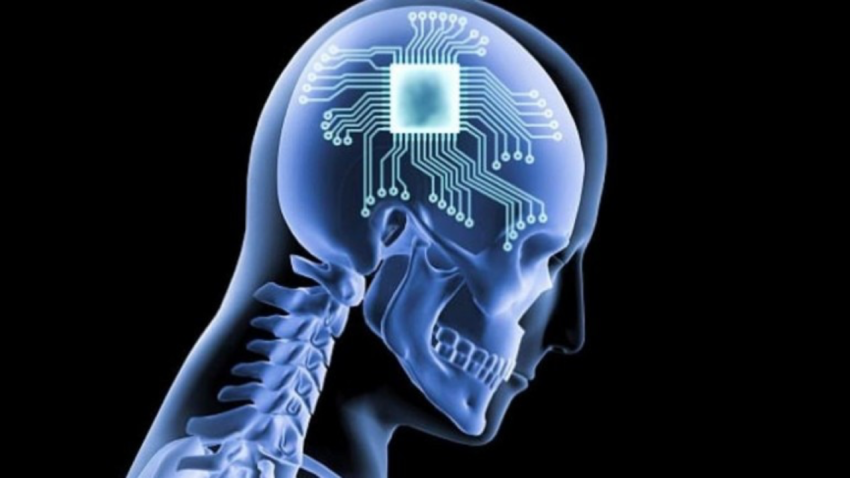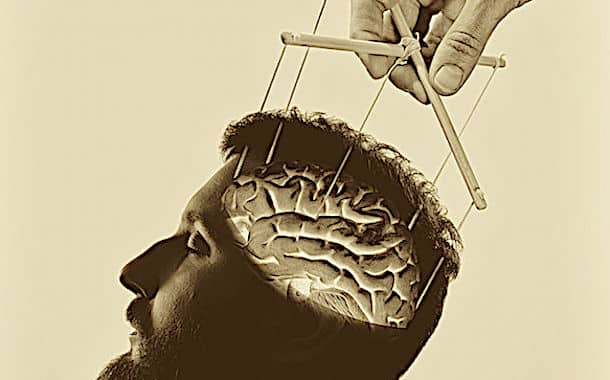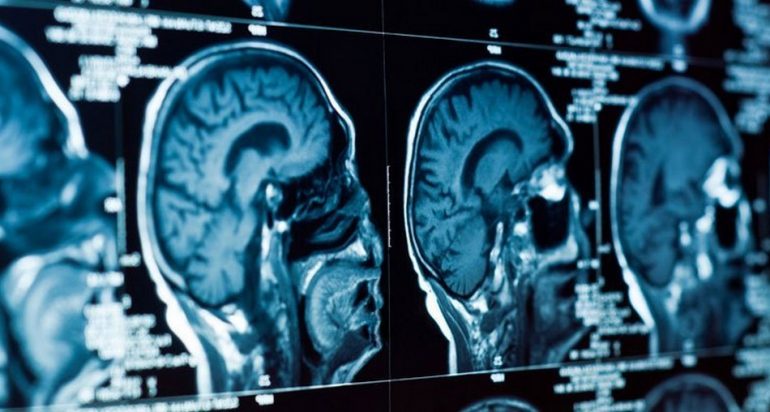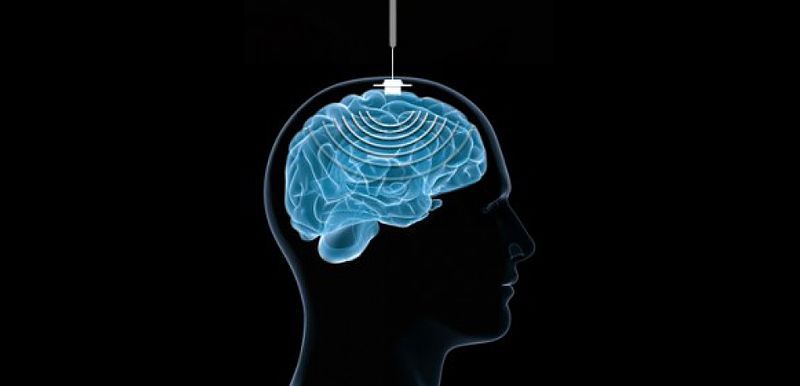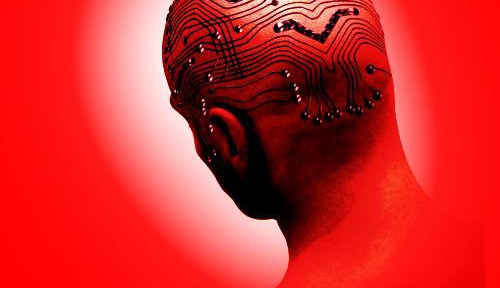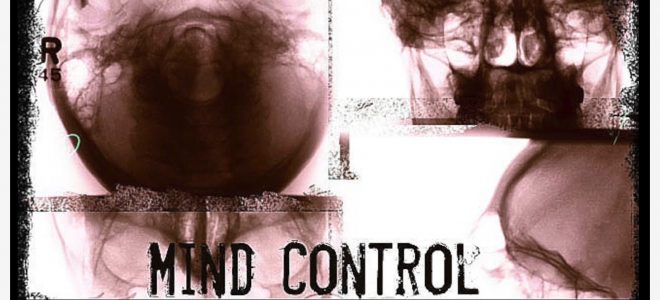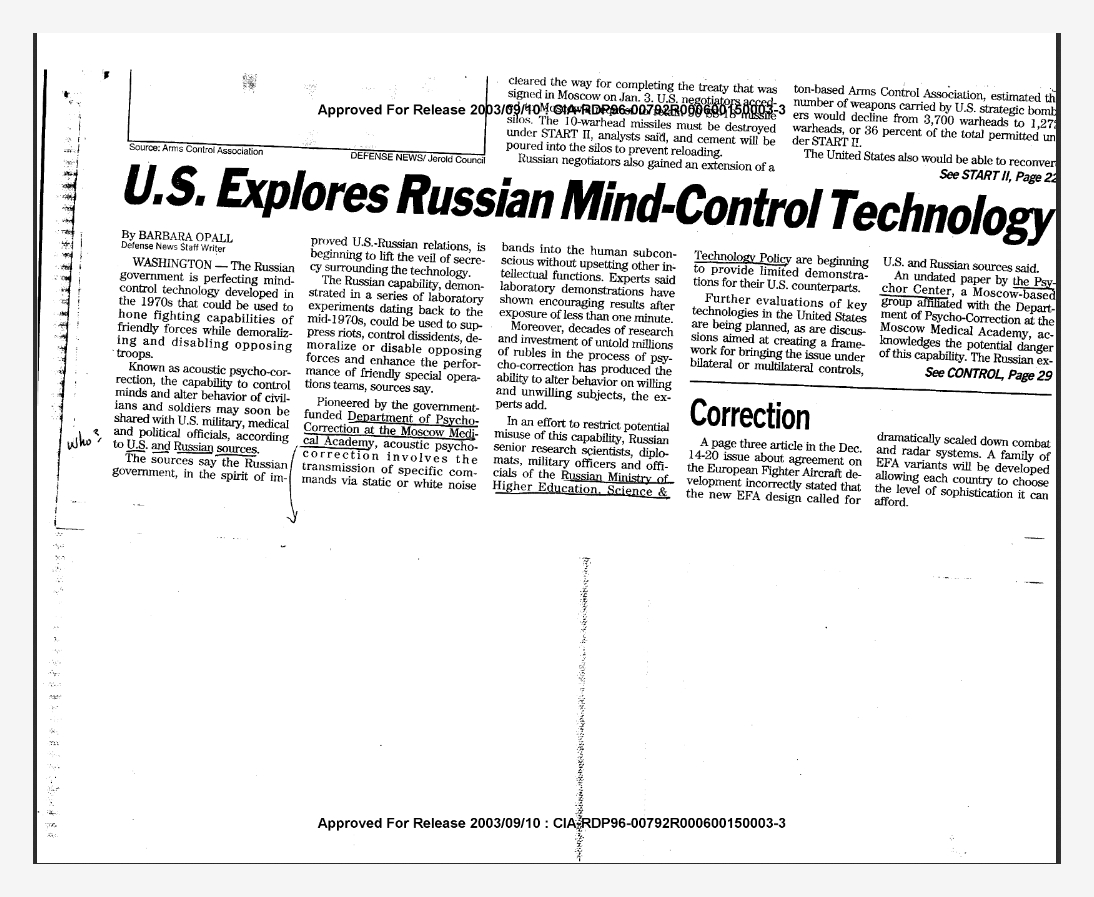Un clin d’œil au texte « Armes silencieuses pour guerre tranquille »
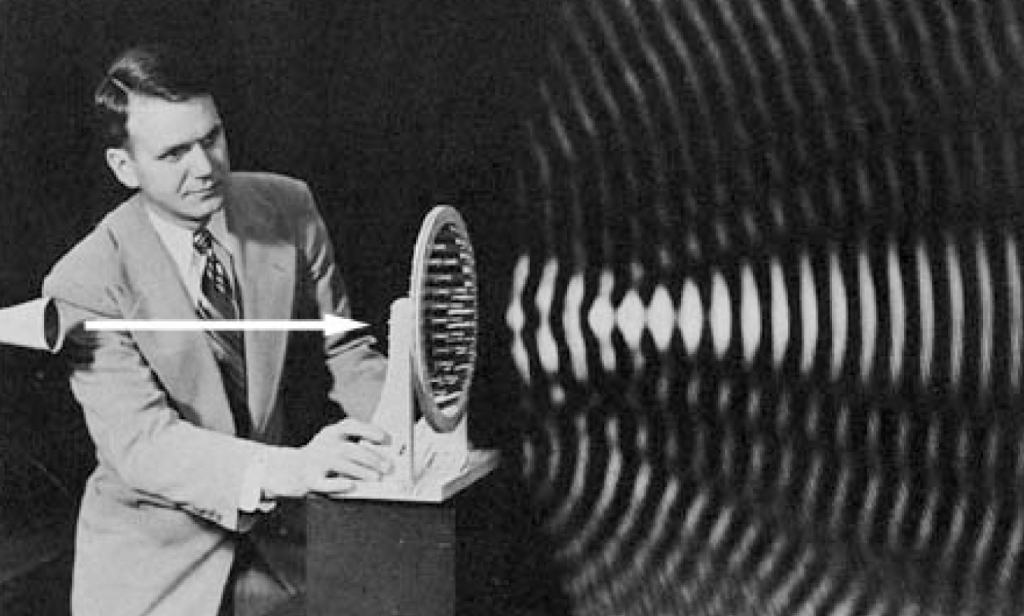
DEADLY SILENCE Fergus Day Extrait d’un article paru dans le numéro 76 de X Factor .
Et s’il y avait une arme dont on ne pouvait ni voir ni entendre les effets, mais pourrait vous tuer à des centaines de mètres de distance ?
Fergus Day évalue le potentiel perturbateur des infrasons.
Imaginez le scénario. Vous marchez dans une rue très fréquentée de la ville lorsqu’une perturbation se produit. Soudain, vous êtes englouti par une masse de corps en mouvement. Vous luttez pour vous échapper, mais vous vous retrouvez bloqué à chaque tournant. Au milieu du chaos, vous entendez le son des sirènes de police qui s’approchent. Mais quand les policiers arrivent, ils ne portent pas les boucliers et les matraques habituels ; ils n’ont que ce qui ressemble à de grands haut-parleurs, tendus à bout de bras. Soudain, vous avez l’impression de ne plus pouvoir respirer ; votre tête bat la chamade alors que vous trébucherez à genoux. Submergé par la nausée, vous essayez de vous lever, mais vous êtes submergé par un sentiment d’anxiété intense et ne pouvez plus bouger. Alors que vous êtes allongé, vomissant de manière incontrôlée, ceux qui vous entourent tombent comme des mouches. Finalement, toute la foule se tord d’angoisse alors que la police entre en scène pour procéder à des arrestations. Au lendemain de votre épreuve, vous vous rétablissez complètement, mais une question demeure : qu’est-ce qui a causé les effets physiques dévastateurs que vous avez subis ? Vous n’avez pas été touché par une balle en caoutchouc, vous n’avez vu aucun gaz lacrymogène ou autre substance nocive dans l’air. Alors pourquoi tant de gens sont-ils tombés par terre comme s’ils étaient atteints d’une maladie invalidante ? La réponse est simple. Vous et votre entourage avez été victimes d’une nouvelle arme terrifiante : les infrasons.
Sound Logic
Depuis des décennies, les forces de police et les autorités militaires du monde entier sont de plus en plus désireuses de trouver des méthodes pour contenir les troubles civils sans les risques pour leurs propres agents qui sont associés aux méthodes actuelles de lutte antiémeute. Et, selon un certain nombre de chercheurs, dans le domaine des infrasons, les scientifiques militaires pourraient maintenant avoir trouvé la solution idéale à ce problème. Mais qu’est-ce exactement que les infrasons et comment sont-ils capables d’induire des effets physiques aussi profonds ? Les infrasons sont des ondes acoustiques puissantes à très basse fréquence. Tout le son que nous entendons, des basses les plus basses aux aigus les plus élevés, se situe entre 16 et 20 000 Hertz, soit des cycles par seconde. Les ondes sonores supérieures ou inférieures à ces niveaux ne peuvent être entendues par l’oreille humaine. Comme les infrasons sont, par définition, des ondes sonores d’un niveau inférieur à 16 Hertz, ils contournent nos oreilles mais peuvent être ressentis par notre corps sous forme de vibrations pures. Et ce sont ces vibrations, qui dépendent de leur intensité, qui, selon certains chercheurs, peuvent provoquer toute une série de symptômes, allant de la nausée, des maux de tête et des vomissements à la rupture d’organes internes et même à la mort. .
Surround Sound
Mais les infrasons ne sont pas une invention nouvelle. Dans la nature, ils sont produits par des événements puissants et destructeurs, tels que les tremblements de terre, le tonnerre et les éruptions volcaniques. Les ondes sonores peuvent parcourir de nombreux kilomètres et ne sont pas bloquées par des pierres, des bâtiments ou d’autres sons. Les infrasons sont également très présents dans la technologie qui domine la vie urbaine dans les villes. Les objets en mouvement rapide tels que les moteurs de voiture, les ventilateurs et les climatiseurs sont responsables des faibles niveaux d’infrasons qui nous entourent quotidiennement. Le fait que certaines fréquences sonores ont des effets certains sur le corps humain est reconnu depuis longtemps par la science. Mais si les ultrasons (fréquences supérieures à 20 000 Hertz) ont été ouvertement exploités par la science à des fins aussi banales que repousser la vermine ou déloger le tartre des prothèses dentaires, l’étude et l’application des infrasons ont été beaucoup plus secrètes. Bien que les recherches sur les infrasons remontent à la Première Guerre mondiale, les études sur leurs effets sur les êtres humains n’ont commencé qu’au début des années 1960. À cette époque, la NASA a parrainé des études sur les effets potentiels sur les astronautes des infrasons produits par les vaisseaux spatiaux au moment du lancement. À la base aérienne Wright-Patterson de Dayton, dans l’Ohio, des sujets étaient placés dans des chambres de pression et soumis à des infrasons. Parmi les effets résultants, il y avait « des vibrations de la paroi thoracique, des sensations de nausé et des changements du rythme respiratoire ». Quelques années plus tard, en 1965, le sinistre potentiel des infrasons a été pleinement mis en évidence. Grâce à des études approfondies, Vladimir Gavreau, un scientifique du Centre national français de la recherche scientifique à Marseille, a découvert que divers effets physiques étaient produits lorsque des êtres humains étaient exposés à des fréquences sonores ultra-basses. Il a fait des expériences avec une série de tubes et de tuyaux d’orgue qui produisaient des notes d’environ 7 Hertz, et a découvert qu’en allongeant les tubes, les ondes sonores pouvaient être dirigées avec une certaine précision. .
Acoustic Lasers
En produisant ces dispositifs, Gavreau avait en effet inventé les « lasers acoustiques ». Ces faisceaux étroits d’infrasons pouvaient apparemment être dirigés avec précision, produisant des nausées, une désorientation et des maux de tête chez ceux qui étaient visés. Lorsque les niveaux d’infrasons étaient intensifiés, les sujets testés ont également fait état de sentiments de peur, de panique et de vision floue. Gavreau pensait qu’un dispositif à infrasons suffisamment puissant pouvait faire tomber des murs, briser des fenêtres et tuer tout le monde dans un rayon de 8 km. L’appareil ne serait pas difficile à fabriquer, a-t-il soutenu, mais il aurait un effet dévastateur. Certains chercheurs ont même affirmé qu’à la fin des années 1960, l’armée française s’est intéressée aux recherches de Gavreau et a utilisé ses découvertes pour élaborer une liste croissante d' »armes secrètes ». .
Military Appeal
Cependant, malgré les affirmations de Gavreau, beaucoup pensent que le développement d’armes à infrasons meurtrières est très peu pratique. Bien que relativement faciles à construire, de telles armes devraient être extrêmement grandes et puissantes pour tuer purement et simplement. Néanmoins, la recherche sur les armes à infrasons non létales se poursuit sans relâche. Le potentiel de ces armes à briser la résistance aux interrogatoires, à induire le stress, la confusion et la désorientation chez un ennemi les a rendues particulièrement attrayantes pour les scientifiques militaires. Si les fréquences infrasonores pouvaient être dirigées avec une extrême précision, comme l’aurait fait Gavreau, un individu ou un groupe pourrait soudainement s’évanouir, vomir ou souffrir d’une crise d’épilepsie, tandis que les personnes à proximité ne seraient pas affectées. Ces dispositifs pourraient également être de petite taille et facilement transportables dans un véhicule blindé. .
Pour beaucoup, la preuve que de telles armes sont en cours de développement depuis des décennies est fournie par un projet d’accord des Nations unies, élaboré en 1976, qui interdit le développement de nouvelles armes de destruction massive. Même à l’époque, les infrasons étaient considérés comme méritant une surveillance particulière, car les progrès réalisés dans le domaine de l’acoustique avaient fait des armes infrasonores une possibilité viable et attrayante. .
Infrasound Tests?
Malgré ces réglementations, de nombreux chercheurs pensent que des armes à infrasons ont déjà été utilisées sur un public peu méfiant. On prétend, par exemple, que dans les années 1970, l’armée britannique a testé des dispositifs à infrasons lors d’émeutes et de troubles civils en Irlande du Nord. Et, avec des niveaux d’investissement toujours plus élevés dans les technologies non létales, il semblerait que de tels incidents ne peuvent que devenir plus fréquents .
Aujourd’hui, les dispositifs à infrasons font partie d’une liste croissante d’armes « non-létales » – y compris les pistolets paralysants, les dispositifs électromagnétiques de contrôle mental et les irritants chimiques – qui sont facilement disponibles. En effet, un certain nombre de technologies à infrasons sont actuellement enregistrées auprès de l’Office américain des brevets. Il s’agit notamment de générateurs et d’émetteurs de bruit, de machines modifiant la conscience et de dispositifs d’excitation du système nerveux – la liste ne cesse de s’allonger. .
En 1995, 41 millions de dollars ont été dépensés pour des armes non létales aux États-Unis et cette technologie suscite un intérêt croissant. De nombreuses forces de police américaines, soucieuses de contrôler les troubles civils, estiment que les infrasons présentent un avantage par rapport aux gaz lacrymogènes, car ils peuvent être contrôlés beaucoup plus facilement. L’efficacité des infrasons a même reçu le soutien du Pentagone qui, dans un document récent, a affirmé que des infrasons de forte puissance pouvaient rendre un ennemi inapte à combattre par la nausée. Les nouvelles avancées en matière d’armes à infrasons suggèrent que les scientifiques militaires sont de plus en plus habiles à exploiter les ultra-basses fréquences. Un dispositif actuellement en cours de développement combinerait un dispositif à infrasons avec une lumière stroboscopique, et serait capable d’induire des crises d’épilepsie extrêmes et une désorientation sensorielle complète. Pourtant, malgré toutes les preuves, les autorités militaires continuent de nier toute implication dans les infrasons, et la nature réelle des recherches reste entourée de secret. Certains ont même affirmé que les prétendues propriétés des infrasons sont loin d’être prouvées. Récemment, le physicien allemand Jurgen Altmann a affirmé qu’après avoir étudié les propriétés des infrasons, il n’a trouvé aucune preuve que ceux-ci ont l’un des effets néfastes signalés. Ce point de vue a été repris par le lieutenant-colonel Martin N. Stanton de l’armée américaine, qui a apparemment trouvé des armes à infrasons peu utiles alors qu’il était basé en Somalie, pays déchiré par la guerre, dans le cadre de la force américaine de maintien de la paix. Stanton met en doute l’efficacité de ces armes, affirmant que les troupes anti-émeutes sont tout aussi sensibles aux effets des infrasons que les émeutiers. Néanmoins, un tel scepticisme ne semble pas avoir affecté ceux qui se sont engagés dans la production d’armes à infrasons. En 1999, Maxwell Technologies de San Diego a déposé une demande de brevet pour une nouvelle arme à infrasons potentiellement mortelle. Ce dispositif, conçu pour contrôler les foules hostiles ou neutraliser les preneurs d’otages, fonctionnerait sur une large gamme de fréquences et serait hautement directionnel. La société affirme qu’il est capable d’affecter des personnes jusqu’à 100 mètres de distance et peut prétendument causer une rupture du tympan à 185 décibels (dB), des lésions pulmonaires (poumon) à 200 dB et la mort à 220 dB.
Deadly Potential
Ces développements et d’autres encore suggèrent que les armes à infrasons sont loin d’être une chimère. Avec la nécessité de contrôler une population toujours croissante, il semble probable que, même si elle n’a pas encore été utilisée, la puissance potentielle des infrasons sera utilisée sous une forme ou une autre à l’avenir. Et comme de plus en plus d’appareils sont brevetés, ce jour pourrait être plus tôt que nous ne le pensons. .
Case: Wired by Sound
Outre la menace des armes à infrasons, un danger plus subtil peut résider dans les faibles niveaux d’infrasons qui nous entourent quotidiennement. Dans les objets quotidiens de la vie technologique urbaine se trouvent de nombreux dispositifs connus pour produire des infrasons. Les machines telles que les voitures, les systèmes de chauffage et les trains produisent tous des fréquences ultra-basses, et souvent les citadins se plaignent de maladies qui peuvent être déclenchées par cette « pollution infrasonore ». Les effets peuvent aller de la perturbation du sommeil et de l’irritation à des tendances suicidaires, mais cela pourrait-il, comme certains l’ont suggéré, être une oppression délibérée des masses ? Bien que cela soit peu probable, au milieu des années 1970, les inquiétudes concernant l’effet des infrasons (ci-dessus) faisaient la une des journaux alarmistes : Le tueur à petit feu : Les sons du silence peuvent-ils nous rendre tous idiots ? Les inquiétudes du public se sont dûment intensifiées et, durant cette période, un article de journal approfondi a apparemment reçu 800 réponses de personnes affirmant avoir souffert des effets des infrasons.
What if there was a weapon whose effects you couldn’t see or hear,
but could kill you from a distance of hundreds of metres?
Fergus Day assesses the disturbing potential of infrasound.
Picture the scenario. You’re walking through a busy city street when a disturbance breaks out. Suddenly, you’re engulfed by a mass of heaving bodies. You struggle to escape, but find your way blocked at every turn. Amid the chaos, you hear the sound of approaching police sirens. When the officers arrive, however, they are not carrying the usual riot shields and batons; they have only what look like large speakers, held out at arms length Suddenly, you feel as if you cannot breathe; your head is pounding as you stumble to your knees. Overcome by nausea, you try to get up, but are engulfed by a feeling of intense anxiety and cannot move. As you lie there, vomiting uncontrollably, those around you are dropping like flies. In the end, the entire crowd is writhing in agony as the police wade in to make arrests. In the aftermath of your ordeal, you recover completely, but one question remains: what caused the devastating physical effects you experienced? You were not hit by a rubber bullet, you saw no tear gas or other noxious substance in the air. So why did so many people fall to the floor as if overtaken by some crippling disease? The answer is simple. You and those around you had fallen victim to a new and terrifying weapon – infrasound.
Sound Logic
For decades, police forces and military authorities throughout the world have been increasingly keen to find methods of containing civil unrest without the risks to their own officers that are associated with current methods of riot control. And, according to a number of researchers, in infrasound, military scientists may now have found the ideal solution to this problem. But what exactly is infrasound and how is it capable of inducing such profound physical effects? Infrasound is a powerful, ultra-low frequency acoustic wave. All the sound that we hear, from the lowest bass to the highest treble, is between 16 and 20,000 Hertz, or cycles per second. Sound waves above or below these levels cannot be heard by the human ear. Because infrasound is, by definition, sound waves of a level below 16 Hertz, it bypasses our ears but can be felt by our bodies in the form of pure vibrations. And it is these vibrations, dependent upon their intensity, that some researchers say can induce a range of symptoms, from nausea, headaches and vomiting, to the rupturing of internal organs and even death. .
Surround Sound
But infrasound is no new invention. In nature, it is produced by powerful and destructive events, such as earthquakes, thunder and erupting volcanoes. The sound waves can travel many kilometres and are not blocked by stone, buildings or other sounds. Infrasound also features strongly in the technology that dominates urban life in towns and cities. Rapidly moving objects such as car engines, fans and air conditioners are responsible for low levels of infrasound that surround us on a daily basis. The fact that certain sound frequencies have definite effects on the human body has long been acknowledged by science. But while ultrasound (frequencies above 20,000 Hertz) has been openly harnessed by science to such mundane ends as repelling vermin or dislodging tartar from dentures, the study and application of infrasound has been far more secretive. Although infrasound research dates back as far as World War I, studies of its effects on human beings did not begin until the early 1960s. At this time, NASA sponsored studies into the potential effects on astronauts of infrasound produced by spacecraft at launchtime. At the Wright-Patterson Air Force Base in Dayton, Ohio, subjects were placed in pressure chambers and subjected to infrasound. Among the resulting effects were ‘chest wall vibrations, gag sensations, and respiratory rhythm changes’. Just a few years later, in 1965, the sinister potential of infrasound was fully uncovered. From extensive studies, Vladimir Gavreau, a scientist from the French National Centre for Scientific Research in Marseilles, found that a variety of physical effects were produced when human beings were exposed to ultra-low sound frequencies. He experimented with a series of tubes and organ pipes that produced notes of about 7 Hertz, and found that, by extending the tubes, the sound waves could be directed with some precision. .
Acoustic Lasers
In producing these devices, Gavreau had, in effect, invented ‘acoustic lasers’. These narrow beams of infrasound could apparently be aimed accurately, producing nausea, disorientation and headaches in those at whom they were directed. When the infrasound levels were intensified, test subjects also reported feelings of fright, panic and blurred vision. Gavreau believed that a powerful enough infrasound device could knock down walls, break windows and kill everyone within an 8km radius. The device would not be difficult to make, he argued, yet would have a devastating effect. Some researchers have even claimed that, during the late 1960’s, the French military became interested in Gavreau’s research and used his findings in the development of a growing list of ‘secret weapons’. .
Military Appeal
Despite Gavreau’s claims, however, many believe that the development of lethal infrasound weapons is highly impractical. Although relatively easy to build, such weapons would have to be extremely large and powerful to kill outright. Nevertheless, research into non-lethal infrasound weapons has continued unabated. The potential of such weapons to break down resistance to interrogation, to induce stress, confusion and disorientation in an enemy has made them particularly appealing to military scientists. If infrasound frequencies could be directed extremely accurately, as reportedly achieved by Gavreau, an individual or a group could suddenly faint, vomit or suffer an epileptic fit, while those nearby would be unaffected. Such devices could also be small and easily carried in an armoured vehicle. .
To many, evidence that such weapons have been under development for decades is provided by a United Nations draft agreement, drawn up in 1976, that prohibited the development of new weapons of mass destruction. Even at that time, infrasound was deemed deserving of special monitoring, owing to the fact that the progress made in the area of acoustics had made infrasonic weapons a viable and attractive possibility. .
Infrasound Tests?
Despite such regulations, many researchers believe that infrasound weapons have already been used on an unsuspecting public. It is claimed, for example, that, during the 1970s, the UK army tested infrasound devices in incidents of rioting and civil unrest in Northern Ireland. And, with ever-increasing levels of investment in non-lethal technology, it would seem that such incidents can only become more common. .
Today, infrasonic devices are among a growing list of ‘non-lethal’ weapons – including stun guns, electromagnetic mind-control devices, and chemical irritants – that are readily available. Indeed, a number of infrasound technologies are currently registered with the US Patents Office. These include noise generators and transmitters, consciousness-altering machines and nervous system excitation devices – the list is growing all the time. .
In 1995, $41 million was spent on non-lethal weaponry in the US and there is growing interest in the technology. Many US police forces, concerned with the control of civil unrest, believe that infrasound has an advantage over tear gas as it can be controlled much more easily. The effectiveness of infrasound has even received the backing of the Pentagon, who in a recent document, claimed that high-power infrasound could leave an enemy incapacitated by nausea. New advances in infrasound weaponry suggest that military scientists are becoming more and more adept at harnessing ultra-low frequencies. A device currently under development is said to combine an infrasound device with a strobe light, and is capable of inducing extreme epileptic fits and complete sensory disorientation. Yet despite all the evidence, military authorities continue to deny any involvement with infrasound, and the actual nature of research remains shrouded in secrecy. Some have even claimed that the alleged properties of infrasound are far from proven. Recently, German physicist Jurgen Altmann claimed that, having studied the properties of infrasound, he found no evidence that it has any of the adverse effects reported. This view has been echoed by Lieutenant Colonel Martin N. Stanton of the US Army, who apparently found infrasound weapons of little use while based in war-torn Somalia as part of the US peacekeeping force. Stanton questions the effectiveness of such weapons, claiming that riot-control troops are just as susceptible to the effects of infrasound as rioters. Nevertheless, such scepticism does not appear to have affected those engaged in the production of infrasound weapons. In 1999, Maxwell Technologies of San Diego applied to patent a new potentially lethal infrasound weapon. The device, designed to control hostile crowds or disable hostage takers, is said to work a cross a wide range of frequencies and is highly directional. The company says it is capable of affecting people up to 100 metres away and can allegedly cause eardrum rupture at 185 decibels (dB), pulmonary (lung) injury at 200dB and death at 220dB.
Deadly Potential
These and other developments suggest that infrasound weapons are far from a pipe dream. With the need to control an ever growing population, it seems likely that, even if it hasn’t been used already, the potential power of infrasound will be utilized in some form or other in the future. And with more devices being patented all the time, that day may be sooner than we think. .
Case: Wired by Sound
Aside from the threat of infrasound weaponry, a subtler danger may lie in the low levels of infrasound that surround us on a daily basis. Within the everyday items of urban technological living are numerous devices that are known to produce infrasound. Machinery such as cars, heating systems and trains all produce ultra-low frequencies, and often city-dwellers complain of illnesses that may be triggered by such ‘infrasonic pollution’. The effects can vary from sleep disturbance and irritation to suicidal tendencies, but could this, as some have suggested, be a deliberate oppression of the masses? Whilst this is unlikely, in the mid-1970s, concerns over the effect of infrasound (above) under the alarmist headline: The Low Pitched Killer: Can Sounds of Silence be Driving Us All Silly? Public worries were duly intensified and, during this period, one in-depth newspaper report apparently received 800 responses from people claiming to have suffered as a result of low levels of infrasound.
 Les cobayes du Mind Control, MK en tout genre, auront servi entre autre à préparer cette réalité et à réduire les risques encourus par ces gens qui se feront augmenter sans crainte. Qui serait assez fou pour servir de rat de laboratoire et essuyer les plâtres, il n’y a qu’à voir comment les gens sont perplexes vis à vis du vaccin ARN…
Les cobayes du Mind Control, MK en tout genre, auront servi entre autre à préparer cette réalité et à réduire les risques encourus par ces gens qui se feront augmenter sans crainte. Qui serait assez fou pour servir de rat de laboratoire et essuyer les plâtres, il n’y a qu’à voir comment les gens sont perplexes vis à vis du vaccin ARN… Concernant ceci : « les risques et les effets secondaires sur le corps pour chaque innovation », je peux dire qu’au bout de 25 ans d’irradiation par ces bombardements d’ondes, j’ai eu droit à un cancer de la thyroïde avec ablation, à ~45 ans et je traîne une neuro-algodystrophie, maladie rare et très douloureuse, (Un dérèglement du système nerveux) depuis 3 ans et demi, durée extrêmement rare ~5% des cas.
Concernant ceci : « les risques et les effets secondaires sur le corps pour chaque innovation », je peux dire qu’au bout de 25 ans d’irradiation par ces bombardements d’ondes, j’ai eu droit à un cancer de la thyroïde avec ablation, à ~45 ans et je traîne une neuro-algodystrophie, maladie rare et très douloureuse, (Un dérèglement du système nerveux) depuis 3 ans et demi, durée extrêmement rare ~5% des cas.


